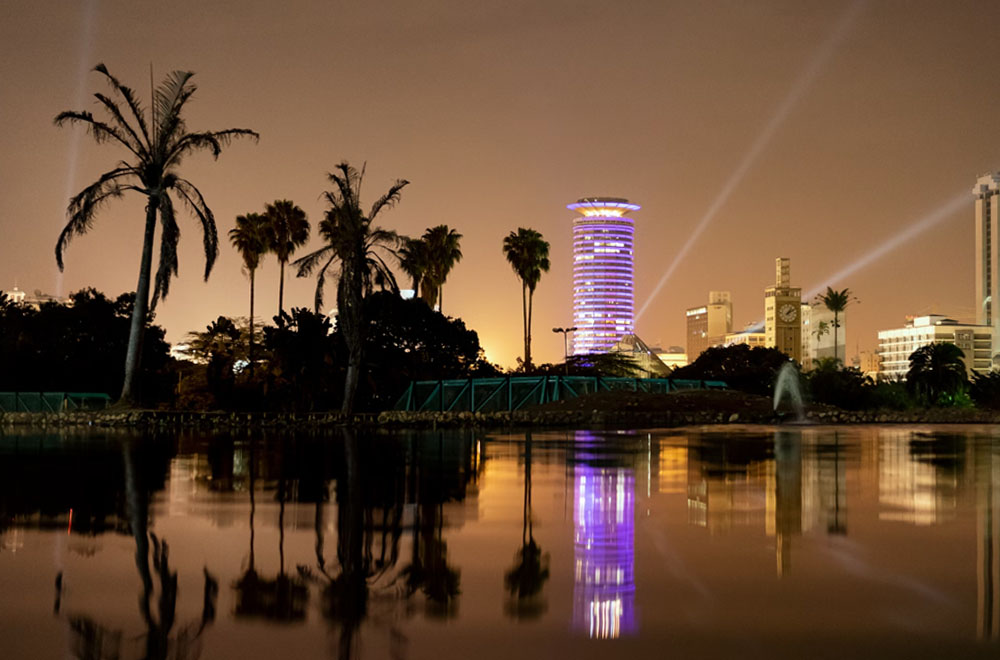Namibia’s Beautiful Offerings
From the awe-inspiring dunes of the Namib Desert to the wildlife-filled plains of Etosha National Park, this southwestern African country offers a wealth of opportunities for exploration and discovery. In this article, we will guide you through the process of planning a family trip to Namibia, covering everything from research and accommodation, choices to activities, safety considerations, and cultural immersion.
Benefits of Traveling with Family
Traveling with your family provides numerous benefits that contribute to the growth and bonding of its members. It allows you to create lifelong memories together, strengthen relationships, and foster a sense of adventure and curiosity in your children. Exposing your family to different cultures, landscapes, and wildlife promotes a broader perspective and an appreciation for the world’s diversity. Namibia’s family-friendly environment and array of activities make it an excellent destination for fostering these connections and creating shared experiences.
Before You Travel to Namibia
Before embarking on your family adventure to Namibia, it is essential to do thorough research to ensure a smooth and enjoyable trip. Familiarize yourself with the country’s geography, climate, and popular attractions. Check the visa requirements for your nationality and ensure all necessary documentation is in order. Additionally, consult with a healthcare professional to understand the recommended vaccinations and medical concerns specific to Namibia. Acquiring comprehensive travel insurance is vital to safeguard against any unexpected emergencies during your journey.
Choosing Accommodation
Namibia offers a range of accommodation options suitable for families, including hotels, lodges, and campsites. Consider your family’s preferences and needs when making this decision. Hotels provide convenience and often have family-friendly amenities such as swimming pools and play areas. Lodges offer a more immersive experience, allowing you to connect with nature and wildlife. For those seeking an adventurous camping experience, there are well-equipped campsites available. Pay attention to the location of your chosen accommodation, considering proximity to attractions and the level of convenience for your family.
Getting Around
Navigating Namibia’s vast landscapes and diverse attractions requires careful planning. Domestic flights are an efficient option for covering long distances, especially when traveling with young children. Alternatively, you can opt for self-driving adventures, which allow flexibility and the freedom to explore at your own pace. Ensure you choose a reliable car rental company and familiarize yourself with the local driving regulations and road conditions. Public transportation is less common in Namibia, but it can be an affordable option for shorter distances.
Family-Friendly Activities
Namibia offers a wide array of family-friendly activities that cater to all ages. Wildlife safaris are a highlight, giving you and your children the opportunity to witness elephants, lions, giraffes, and other incredible animals in their natural habitats. Engaging in cultural experiences, such as visiting indigenous communities or participating in traditional craft workshops, allows your family to learn about Namibia’s diverse cultures. Adventure activities like quad biking, sandboarding, and hot air ballooning provide thrilling experiences for older children and teenagers. Don’t forget to enjoy the stunning beaches along Namibia’s coastline, offering relaxation and playtime for the whole family.
Preparing Your Children
To ensure a successful trip, it’s crucial to prepare your children for the unique experiences they’ll encounter in Namibia. Research age-appropriate activities and involve your children in the planning process. Take advantage of educational opportunities by teaching them about Namibia’s history, wildlife, and culture before the trip. Emphasize safety considerations, such as staying close to adults, wearing sunscreen, and following the guidance of local guides. Packing essentials for children include comfortable clothing, sturdy shoes, hats, and any special items they may need for their comfort and entertainment during the journey.
Food and Dining
Namibia offers a diverse culinary scene, combining traditional African flavours with European influences. Local cuisine often includes game meat, freshly caught seafood, and hearty stews. However, if your family has dietary restrictions, there are also international restaurants and options available that cater to various preferences. Research family-friendly restaurants in the areas you plan to visit, as some establishments provide play areas or entertainment for children. To manage meal planning, consider including visits to local markets where you can purchase fresh produce and snacks for your family.
Communication and Language
While English is widely spoken in Namibia, it’s always beneficial to learn a few common phrases and greetings in the local languages, such as Oshiwambo and Damara/Nama. This effort to communicate in the local language shows respect and can enhance your interactions with locals. In some remote areas, language barriers may arise, but Namibians are generally friendly and accommodating, and non-verbal communication can bridge these gaps. Familiarize yourself with local customs and etiquette to ensure you and your family can interact respectfully and appreciate the cultural nuances.
Budgeting and Finance
Planning your budget for a family trip to Namibia is essential to ensure financial preparedness. Research the cost of accommodation, activities, meals, and transportation to create a realistic budget. Keep in mind that Namibia’s currency is the Namibian dollar (NAD), and it is advisable to have some cash on hand for remote areas where card payments may not be accepted. Familiarize yourself with the local exchange rates and consider using a combination of cash, credit cards, and travel-friendly prepaid cards. Look for opportunities to save money, such as booking accommodations with kitchen facilities for self-catering options or taking advantage of discounted activity packages.
The Namibian Dollar is on par with the South African Rand, and the Rand is widely accepted in Namibia. Therefore, travellers coming from South Africa do not need to exchange their Rand for Namibian Dollars.
See below cost estimations of the cost of living in Namibia:
- A family of four estimated monthly costs are 33,110.5N$ without rent.
- A single person estimated monthly costs are 9,570.3N$ without rent.
Health and Safety
Prioritizing health and safety is paramount during your family trip to Namibia. Adhere to general safety tips, such as staying in well-lit areas, securing your belongings, and keeping important documents in a safe place. Ensure you have emergency contacts readily available, including local authorities, your accommodation, and your embassy or consulate. Familiarize yourself with the location of medical facilities and services in the areas you plan to visit. Exercise caution with water and food consumption, opting for bottled water and well-cooked meals to prevent any potential health issues.
| Organization | Telephone Number |
| Headquarters Fire Station | 211 111 |
| Maxuilili Fire Station | 212 265 |
| Otjomuise Fire Station | 290 3381 |
| Diaz Street Fire Station | 250 084 / 250 446 |
| Namibian Police | 10 111 |
| State Hospital | 203 9111 |
| City Police Emergency: | 302 302 (Toll Free) |
| – | 290 2239 / 290 2454 |
| – | SMS 444 |
| Electricity Failure | 222 658 (All Hours) |
| Water & Sewerage | 290 2402 / 2162 (After Hours) |
| City Traffic Management | 290 2722 / 258 473 |
| Protection | 209 5375 |
| Rescue 911 | 222 255 |
| Disaster / Emergency CO | 081 127 8368 |
Packing Essentials
When packing for your family trip to Namibia, consider the various activities and climates you’ll encounter. Pack appropriate clothing and gear, including lightweight, breathable clothing for hot weather and layers for cooler nights. Don’t forget essential items for children, such as sunscreen, hats, insect repellent, and comfortable shoes. Prepare a well-stocked first aid kit that includes any necessary medications, as well as remedies for common ailments. Additionally, consider bringing technology and communication devices, such as smartphones or tablets, to help entertain and educate your children during travel downtime.
Navigating Namibian Culture
To fully appreciate Namibia’s culture, take the time to understand its history, traditions, and customs. Respectful behaviour towards locals is crucial, so familiarize yourself with cultural norms and be mindful of local sensitivities. Seek opportunities to engage with the community, whether it’s attending cultural events or supporting local artisans. By immersing yourselves in the local culture, your family will gain a deeper understanding of Namibia and create meaningful connections with its people.
Conclusion
Namibia is an extraordinary destination for families seeking adventure, wildlife encounters, and cultural immersion. With its diverse landscapes, family-friendly activities, and welcoming locals, Namibia offers an unparalleled experience for travellers of all ages. By conducting thorough research, making informed decisions about accommodation, transportation, and activities, and prioritizing health and safety, you can plan a memorable and successful family trip to Namibia.
Written by Simon Carletti, PR and Creative Supervisor



